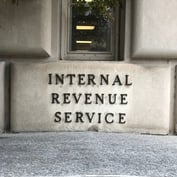The Internal Revenue Service is trying to help administrators of estates and nongrantor trusts cope with a new U.S. Supreme Court ruling.
The court ruled in January, in Michael J. Knight, Trustee of William L. Rudkin Testamentary Trust vs. Commissioner, that trusts and investment advisors can deduct investment advisory fees only to the extent that miscellaneous itemized deductions amount to at least 2% of income.
Before the court issued the ruling, some administrators of estates and nongrantor trusts had operated under the assumption that estates and nongrantor trusts could deduct investment advisory fees without applying the 2% floor for miscellaneous itemized deductions, by using a rule that permits estates and nongrantor trusts to deduct the full cost of estate and trust expenses.
The Supreme Court held in January that trust and estate investment advisory fees are generally not special estate or trust expenses, because many taxpayers that are not estates or trusts pay similar types of investment advisory fees.
The IRS now has announced in IRS Notice 2008-32 that it wants to develop final regulations as quickly as possible to help taxpayers apply the ruling.
“The final regulations may contain one or more safe harbors for the allocation of fees and expenses between those costs that are subject to the 2% floor and those that are not,” IRS officials write in the notice.








 February 27, 2008 at 02:26 PM
February 27, 2008 at 02:26 PM










